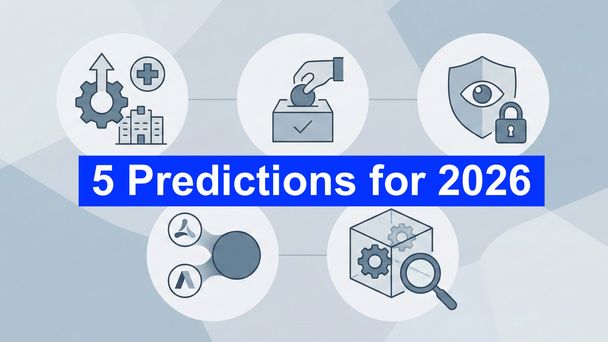5 Predictions for 2025: The AI Revolution Takes Shape
As we edge closer to 2025, the AI landscape is rapidly evolving, promising transformative changes across industries. Yet, with great potential comes great complexity. From investment trends to technological advancements, here are five bold predictions for the future—and the debates they spark.

1. The AI Investment Bubble and Correction
In 2025, annual AI investments are expected to reach $250 billions. However, as profits struggle to keep up with these staggering inflows, a market correction—or bubble burst—may be on the horizon.
Why It’s Plausible
- Valuation Overload: Many AI startups are enjoying inflated valuations fueled by hype, with profitability still a distant dream.
- Market Saturation: The ecosystem is becoming crowded, with only a handful of first movers likely to dominate, leaving others to face consolidation or closure.
- Lessons from History: The dot-com bubble showed us how unsustainable growth leads to inevitable corrections.
Counterpoints
- Long-Term Innovation: Despite potential short-term hiccups, the long-term value of AI remains undeniable. Core innovations are here to stay.
- Consolidation Benefits: Mergers and acquisitions could create stronger players, stabilizing the sector instead of causing a crash.
- New Opportunities: Emerging technologies like Large Quantitative Models (LQMs) may open fresh revenue streams, mitigating risks.
The Takeaway: The market will separate visionaries from opportunists. While some may stumble, AI’s transformative potential ensures it will remain a critical investment domain.
2. Hyperautomation Goes Mainstream
By the end of 2025, 30% of enterprises will have embraced hyperautomation, integrating AI and machine learning into their operations. The goal? Streamline processes, enhance efficiency, and deliver higher-quality outcomes.
Why It’s Plausible
- Efficiency Gains: Hyperautomation reduces manual errors, accelerates processes, and lowers costs, making it an operational necessity.
- Labor Shortages: Many industries face workforce gaps that automation can help bridge.
- Mature Technology: The synergy between AI, robotic process automation (RPA), and machine learning makes deployment scalable and impactful.
Counterpoints
- Integration Complexity: Many companies rely on legacy systems that are expensive and difficult to modernize.
- Employee Resistance: Concerns over job displacement could slow adoption, especially in sectors with strong unions.
- Security Risks: Automating critical processes introduces vulnerabilities that must be addressed.
The Takeaway: Hyperautomation is a no-brainer for enterprises seeking to remain competitive, but adoption will hinge on overcoming technical and cultural hurdles.
3. AI-Augmented Software Development
AI will handle 40% of software development tasks—including coding, testing, and deployment—up from just 15-20% in 2023. This shift promises to redefine how we build software.
Why It’s Plausible
- Efficiency Gains: AI tools like GitHub Copilot and automated testing platforms are already slashing development times and reducing errors.
- Developer Shortages: AI-assisted development can fill talent gaps by enabling less experienced programmers to contribute effectively.
- Cost Savings: Automating repetitive tasks lets teams focus on high-value activities, reducing overall costs.
Counterpoints
- Quality Concerns: AI-generated code often requires rigorous oversight to ensure reliability and security.
- Learning Curve: Developers need to adapt to working alongside AI, which may slow initial adoption.
- Intellectual Property Issues: Concerns about AI-generated code violating IP rights could create legal and ethical challenges.
The Takeaway: AI won’t replace developers but it will become their indispensable partner, reshaping the software development process in profound ways.
4. No Attainment of AGI
Despite all the hype, don’t expect Artificial General Intelligence (AGI) - machines that think and learn like humans - by 2025. While AI systems are becoming increasingly sophisticated, true AGI remains out of reach.
Why It’s Plausible
- Technical Challenges: Achieving AGI requires breakthroughs in understanding cognition, consciousness, and adaptive learning—areas where progress is slow.
- Focused Research: Most funding and development are still directed at improving narrow AI applications rather than AGI.
- Resource Intensity: AGI demands computational and data resources far beyond what’s currently available.
Counterpoints
- Unexpected Breakthroughs: Non-linear advancements in technology could accelerate AGI development faster than anticipated.
- Cross-Disciplinary Inputs: Insights from neuroscience, quantum computing, and other fields might speed up progress.
- Blurred Lines: As task-specific AI becomes more advanced, distinguishing it from AGI may become a semantic debate.
The Takeaway: AGI isn’t around the corner, but incremental advancements in AI will continue to revolutionize industries and reshape society.
5. The Compute Surge
The rise of compute power, driven by advancements in GPUs and TPUs, will reshape technology infrastructure. In 2025, this “computational fabric” will serve as the foundation for innovative apps, reminiscent of the web2 boom.
Why It’s Plausible
- Massive Investments: Companies are pouring resources into data centers and edge computing, driving down costs and improving accessibility.
- Enabling New Applications: From real-time language translation to immersive AR/VR experiences, compute power will unlock next-gen innovations.
- Edge Computing Growth: Real-time, localized processing reduces latency and enhances the practicality of applications like IoT and autonomous vehicles.
Counterpoints
- Energy Concerns: The rising demand for compute power strains energy resources, raising sustainability and cost issues.
- Supply Chain Risks: The semiconductor industry still struggles with supply chain challenges that could slow progress.
- Regulatory Oversight: Governments may impose restrictions on data center expansions or energy consumption, complicating growth.
The Takeaway: Compute power is the fuel of the AI revolution. While challenges remain, the surge in computational infrastructure will pave the way for groundbreaking advancements.
Looking Ahead
These five predictions paint an exciting yet complex picture of 2025. From groundbreaking advancements in software development to the potential reckoning of an AI investment bubble, the road ahead will be marked by opportunities and challenges alike. Whether you’re an investor, developer, or business leader, staying ahead of these trends will be crucial.


